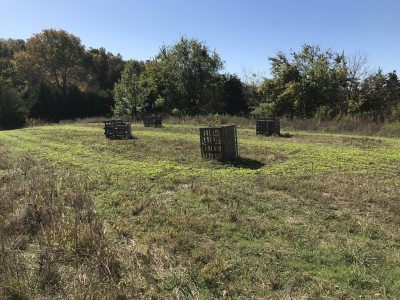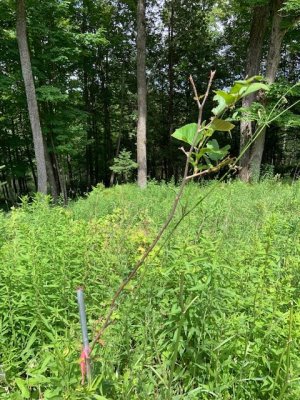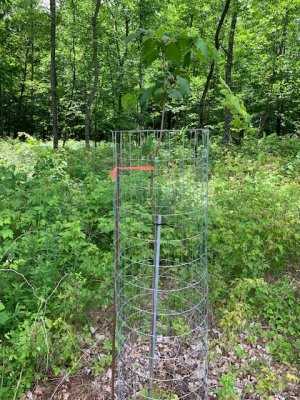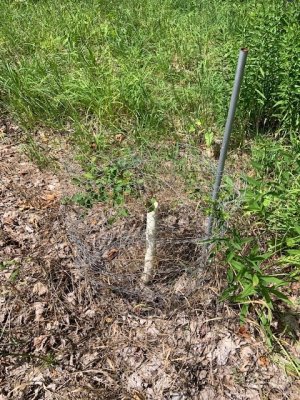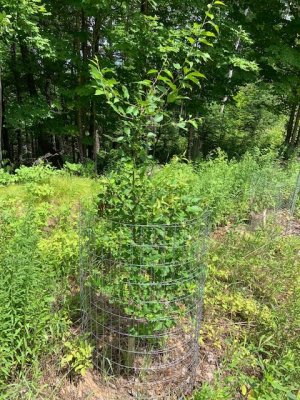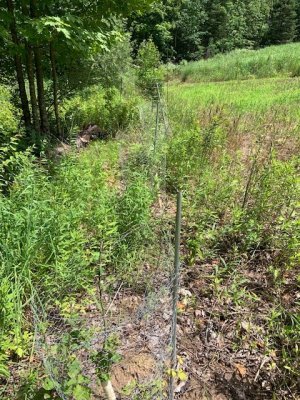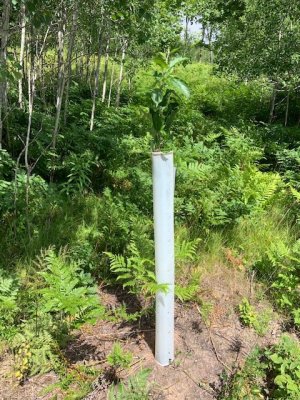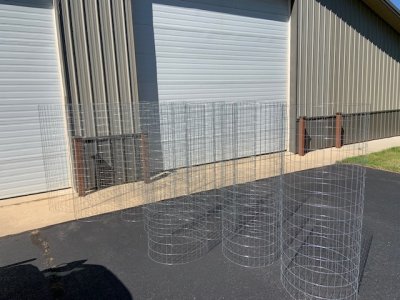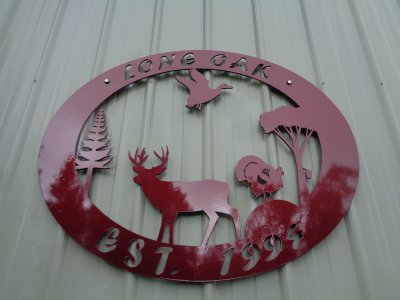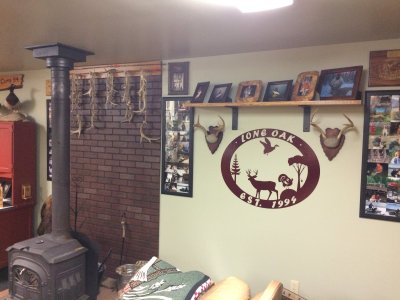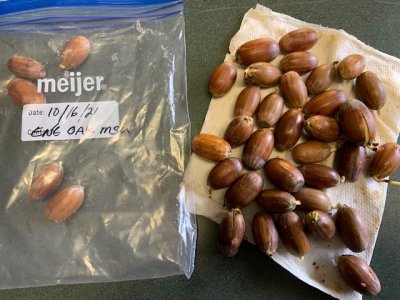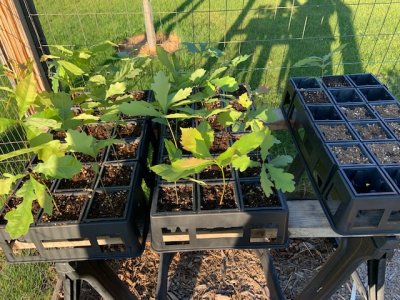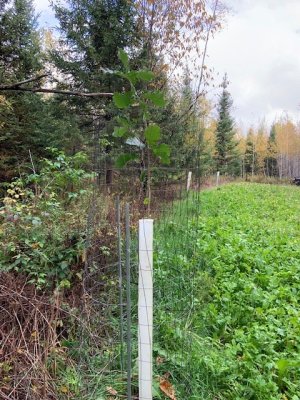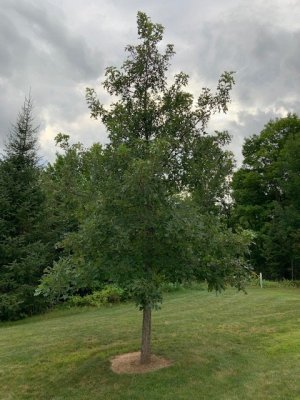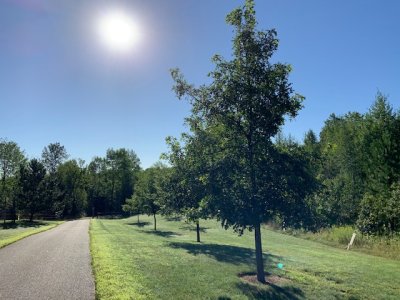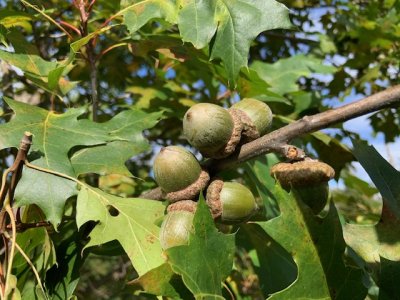I've used everything I think over the past 28 years here including chicken wire, 4' high welded wire as well as 5' and 6' welded wire for cages. I don't cage conifers - although at one time if we wanted a naturally seeded White Pine to survive we did have to cage if for 2-3 years. Now, with a more normal deer density it isn't necessary.
Here is my take on it. I will never use chicken wire again for cages. Those that I still have out there on some young crabapples will be scrapped wihen I step up to 4' or 5' welded wire 2x4 cages.
I will never buy 4' high welded wire again either. It can be somewhat successful if you make it wide enough but I prefer to have them a little narrower. I can get double the number of cages from 5' high wire than I can get from 4' high because I don't have to make them as wide.
I am still using 6' high 2x4 welded wire for cages that I originally purchased in 1995 and I will continue to reuse it, but I won't purchase any more.
I have decided that for what I am doing, 5' high welded wire is the ideal size. I just purchased 2 more 50' rolls of it today to cage some Red Osier Dogwoods that are coming out of the tops of the tubes. If I simply remove the tubes and leave them on their own the deer will devastate them. If I cage them for a few years the deer can still browse around the outside of the cages every year but they won't kill the plants.
I have used lots of T-Posts and rebar in the past and I still reuse those as well but for the past several years all I have purchased is 10' sections of 1/2" EMT conduit and cut them in half.
I initially used 20' of 6' welded wire for each individual apple tree so I still use those for new apple trees I plant (although I am about done planting new apple trees).
These days I am using cages for oak trees I start from acorns - once they come out of the tubes, a couple dozen ROD, and crabapples - some of which I started from seed and some seedlings which I purchased.
Yes - there is more than one way to skin a cat, and yes, caging trees is "high maintenance" but in some cases it is necessary. For example, we named our farm "Lone Oak" as there was only a single Northern Red Oak on the entire 160 acres when we purchased it. I have planted several hundred oaks since then and while I am just beginning to get acorns from trees I have planted, some day, somewhere down the line, somebody is going to really appreciate what I have done by planting them now. That is what keeps me doing the things I do. Trying to be a good steward of the land and leave it in better condition than it was when I acquired it.
For oaks I almost always start out with acorns - this is the cheapest part of growing an oak tree LOL
View attachment 43946
Sometimes I direct seed the acorns in their permanent locations but I also start acorns in Rootmaker Express cells
View attachment 43947
at the end of summer if I haven't planted them in their permanent locations they will go in one of the raised boxes in my wife's garden for the winter and are then transplanted in spring
View attachment 43948
They are tubed as soon as they are planted but eventually they will grow out of the 4' tubes. If I had it to do over I would have purchased all 5' tubes.
View attachment 43949
I leave them in the tubes for another couple of years even after I cage them as they are too wimpy to stand on their own. The tubes need to be removed each spring in order to clean out the fallen leaves and to remove the lower branches. I keep trimming the branches until the lowest branch is above the tube.
View attachment 43955
When they can stand on their own and the lower branches are well above ground level the cages can be removed and reused on another tree
View attachment 43950
10' lengths of 1/2" EMT Conduit - cut in half gives me 5' stakes
View attachment 43951
More of the 6' welded wire which has been reused and repurposed since 1995. For oaks and shrubs I cut the wire to a little over 6' lengths and wire it together to give me about 2' diameter cages. I get 8 cages from a 50' roll of wire.
View attachment 43952
Uncaged trees like this would be browsed to the top of the tube and never grow any higher.
View attachment 43953
More of the old 6' high cages being used on yet another apple tree...
View attachment 43954
Tubing and caging trees is expensive and labor intensive until the tree is big enough to make it on its own but it has to be done. If there is any saving grace is that if you do only what you can handle each year, you can reuse the tubes, fencing and stakes many times over.


